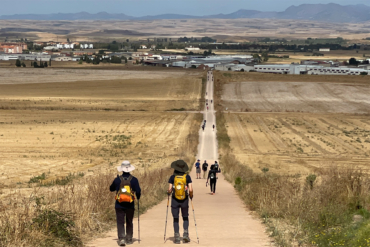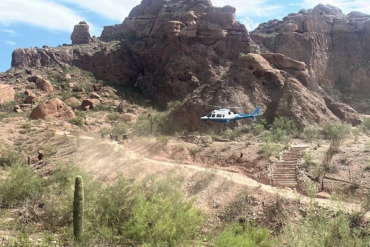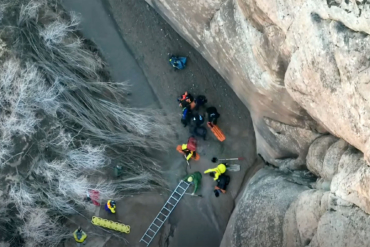Goats love salt so much they’ll lick spots where humans pee. Scientists in Glacier National Park studied this bizarre phenomenon by donning a bear costume.

Where you pee, goats follow. An icon of Glacier National Park’s rocky and steep landscape, the mountain goat has a strong hunger for salt. This leads the furry animals to natural mineral licks and also hiking trails, in search for the salt left by human urine.
A team of scientists examined this phenomenon by seeking to understand how goats respond to predators in human populated areas of the park.
Researchers from the University Of Montana spent three years in Glacier National Park. They explored the ever-growing human presence in the park, and invariably, the increasing amounts of anthropogenic (human originating) salt licks.
To understand the impact of goats’ thirst for human urine, they hypothesized that the animals wouldn’t respond as severely to predators in human-trafficked areas compared to the isolated backcountry.
The best part of it all? To simulate predators, the scientists dressed up as grizzly bears, complete with a styrofoam head and furry cape.
Goats In Glacier: A Study

The sites examined in Glacier National Park see thousands of visitors each day. And with these visitors comes a lot of pee. The prevalence of goats in human-populated areas is two-fold: Increased salt presence and fewer predators.
The study, “Human visitation limits the utility of protected areas as ecological baselines,” published last month in the journal Biological Conservation explored this relationship.
For high human traffic sites, the team used hiking trails near Logan Pass, Sperry Chalet, and the Walton Lick to examine goat presence. For lower traffic sites, the team explored areas two kilometers beyond those locations.
They wanted to find out if goats perceive predation risk at human and non-human sites differently.
In 2014, the team simulated a grizzly using a styrofoam head and furry fabric cape. To save weight as they trekked the backcountry in 2015, they opted for large dark coats and a bear mask from Rubie’s Costume Company.

They made sure to keep quiet and stay downwind so their scent wouldn’t give them away.
Then they tracked how the goats responded.
Results: When Goats See Fake Bears
When the goats came across the fake bear, they took to the hills. For the goats, sheer vertical cliffs are safety. The problem is human areas are commonly not near vertical cliffs, so safety is compromised.
With the simulated bear encounters, goats didn’t run nearly as far when near hiking trails. In the backcountry away from humans, goats ran an average of 184 meters further.
The scientists used a Garmin E-Trex Vista GPS to measure the distance from salt licks to cliffs.
“Goats near people had significantly weaker responses to predation risk and engaged in risker behavior compared to goats further from human realms,” the scientists concluded.
As the presence of humans in Glacier National Park impacts how goats and predators operate, they suggested some interventions for the Park.
Lowering human pee sites by adding more toilets was one suggestion, enhancing natural mineral licks in the backcountry with the presence of salt blocks to lure goats away was another.
So if this study has taught us anything, it’s that humans likely affect the behavior of wildlife in unexpected ways.
And those looking to keep goats away, we’d suggest finding a bear suit with great venting and breathable fabric.







